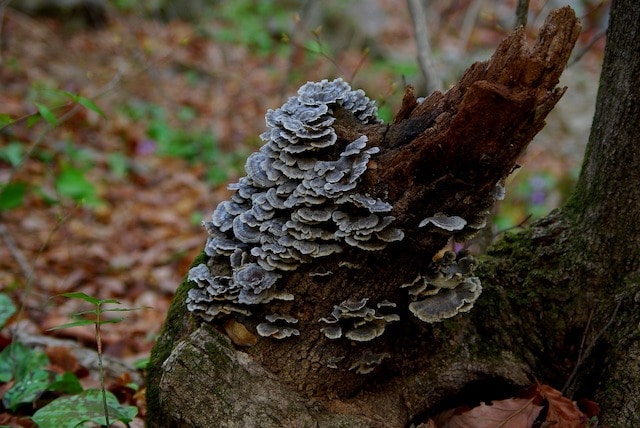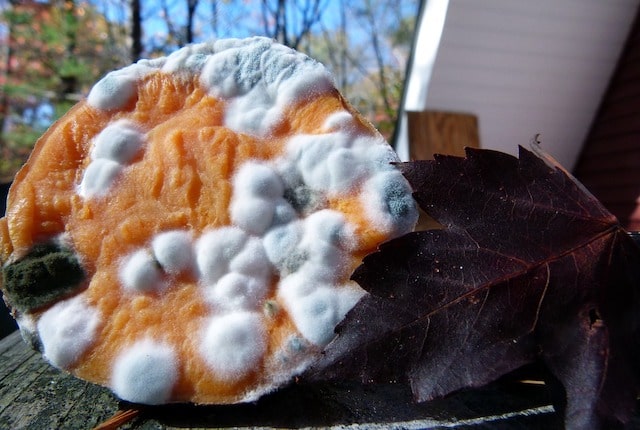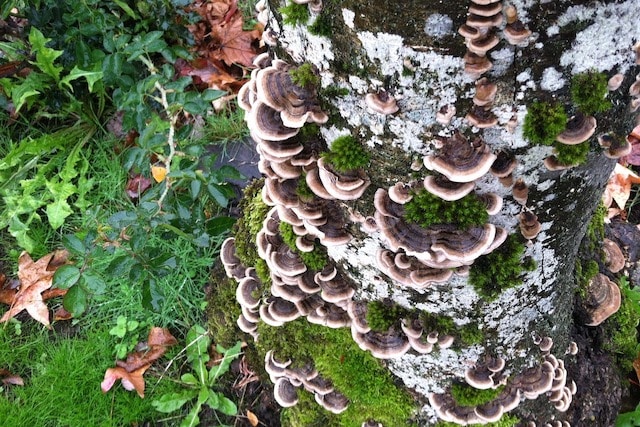https://ift.tt/2HsN6pO
One of the most immediately surprising facts about fungi may be how to pronounce the word: fun-jai, not fun-guy. But the fun(gi) doesn’t stop there.
From fungal intelligence to saving the world, fungi are full of surprises.
10. They’re the Most Populous Kingdom on the Planet
We don’t know how many species (of any kind, fungal or not) there are on Earth, but recent estimates suggest as many as 8.7 million—6.5 million on the land and 2.2 million in the sea.
Of these, a staggering 5.1 million species—more than half the total—are thought to be fungi, outnumbering plant species by more than 6 to 1. And, according to one of the world’s leading mycologists, Paul Stamets, this ratio may actually be closer to 10:1; certainly around 30% of the soil mass beneath our feet is fungal in nature, both living and dead, representing the “biggest repository of carbon in the world.” In fact, for every meter of tree root, Stamets says, there’s a kilometer of mycelium—the sprawling underground network of branching tubular filaments, or hyphae, that underpin mushroom growth on the surface.
Even if, as some have speculated, the total number of species approaches 1 trillion (1,000,000,000,000), the majority of these are probably microbial fungi. And since many of them thrive on your body, there’s really no escaping. Fungi are everywhere.
9. They’re Ancient, Enormous, and Incredibly Resilient
We know fungi predate humans by millions, even billions, of years and not just by extrapolating to the past. We’ve actually found 90-million-year-old specimens of Cordyceps in amber and fossilized Prototaxites dating back 420 million years. We also know the fungal kingdom has long boasted some of the largest organisms on Earth. That prehistoric Prototaxites, for example, reached a towering, spire-like 24 feet in its day, a time when even the tallest trees were no more than a few feet high.
Even today, the largest living fungus dwarfs many major cities, and easily an adult blue whale. With its sprawling, 2,384-acre mycelium, the giant, 2,400-8,650-year-old Armillaria ostoyae of Oregon’s Blue Mountains covers an impressive four square miles—the equivalent of nearly 2,000 football fields.
Fungi are also surprisingly resilient. Certain species can survive at sub-zero temperatures by generating their own heat (hence the need to freeze meat to -10°F or below), as well as relatively high temperatures of up to 150°F.
Evidence even suggests that fungal spores could survive in interstellar space for hundreds of years—or perhaps even tens of millions of years given dark, molecular clouds to travel in. In theory, this could allow them to drift from one solar system to another for aeons, potentially seeding life across whole galaxies.
8. Fungi Are Medical Miracle Workers
For thousands of years, fungi have been used in medicine. The ancient Chinese used Ophiocordyceps sinensis (a fungus that grows on insects) as a general panacea, Hippocrates used Fomes fomentarius as an anti-inflammatory, and Native Americans used puffballs on wounds. More recently, of course, penicillin (from Penicillium fungi) has been used as an antibiotic.
And we can expect plenty more fungal remedies in the future. One of the most promising and potentially groundbreaking species is the agarikon wood conk (Laricifomes officinalis) that grows on Douglas fir trees in the forests of the Pacific Northwest. This lumpy fungus, which looks a little like a wasps’ nest on trees, is extremely resistant to a range of flu viruses—including (in combination with other mushrooms) the potentially devastating bird flu—and it’s completely non-toxic for us.
It could also be key to developing effective vaccines against smallpox, which is big news considering how few of us have been vaccinated and how little vaccine there is. Hence the Department of Health and Human Services set up Project BioShield to investigate the agarikon fungus, and Stamets has declared the conservation of its old-growth habitats a matter of national security.
7. Raw Mushrooms Are Inedible (Especially the Ones that You Eat)
Whether we like them or not, we all tend to think of edible mushrooms as a generally healthy food. And we’re not entirely wrong—particularly when it comes to medicinal mushrooms like reishi (lingzhi), shiitake, and lion’s mane. However, there’s an important caveat to keep in mind: All mushrooms need to be cooked.
Because of their tough cell walls composed mainly of chitin (the same protectively fibrous substance as the exoskeletons of arthropods), uncooked mushrooms are basically indigestible by humans. Worse, many species (or even individual specimens of otherwise “edible” species, because of their porousness) contain harmful pathogens and toxins that may lead to cell damage and digestive irritation, among other specific complaints.
Not only will thorough heating eliminate these toxins from mushrooms, but cooking or heat-treating is also necessary to release the proteins, vitamins, and minerals that we’re eating them for in the first place.
Surprisingly, this caveat especially applies to the everyday “salad mushrooms”—the white/button/portobello/brown/chestnut/cremini type—that so many of us like to eat raw. There’s a genuinely creepy part of Stamets’ interview with Joe Rogan where, having stated these mushrooms in particular need to be cooked at high temperatures, he refuses to explain exactly why. When pressed by Rogan on what some of their negative effects might be, Stamets just stares back at him and says, in all seriousness, “this is an explosive area of conversation and it puts my life in danger, so I reserve the right not to answer the question.”
It’s not entirely clear what he meant by that, but we do know that an “unfortunate group of compounds” in this type of mushroom (Agaricus bisporus) has carcinogenic properties. And while these agaritines, as they’re called, do break down when cooked, they need to be cooked pretty well—since even boiling these mushrooms for 2 hours straight won’t completely eliminate the compounds.
6. They Can Be Used to Make Paper and Clothing
Fungi have many uses besides the medicinal and gourmet. For example, the same chitin that makes them pretty much indigestible for humans can also be used to make paper. Scientists realized this in the 1970s while investigating chitin shrimp shells as a possible alternative to wood pulp. Moreover, some of the best fungi for papermaking—turkey tail and reishi—are both easy to mass produce. In fact, with only a few pieces of equipment, you could rapidly grow them at home, then pulp them in a blender to mold into sheets to dry.
Fungi can also be used to make textiles, as well as the dyes to color them. Romanians have long extracted amadou from Fomes fomentarius fungi to make traditional felt-like hats, for example. But it turns out garments can actually be grown as fungi from scratch. Starting out in petri dishes, living mycelium “fabric swatches” are placed around 3D models and allowed to grow into individual, one-of-a-kind garments. Even shoes can be made in this way. And of course they’ll all be 100% biodegradable, as well as, in many cases, water-repellant, anti-microbial, and actually beneficial for the skin.
5. They Can Be Used to Light Up the Dark
Fomes fomentarius has a far more prehistoric, and far more functional, use than hatmaking. Also known as the tinder fungus, it has a remarkable ability to catch and hold the otherwise cold, inert sparks that come from striking flint—ideal for starting and carrying fires in the wild. This may have been why Ötzi the Iceman, the frozen 5,000-year-old mummy, carried a lump of it in a pouch.
But there’s another way fungi can light up the dark, and it doesn’t involve any flames. Bioluminescent fungus species produce a green glow or “foxfire” when luciferin (“light-bringer”) molecules react with oxygen—just as in fireflies, anglerfish, and other bioluminescent organisms. More than 80 species of fungus, including Neonothopanus gardneri (flor de coco), are known to glow in the dark and, interestingly enough, they only glow in the dark, attracting insects at night to scatter their spores.
Clearly this is of interest to us. For one thing, thanks to the compatibility of fungal luciferin with plant biochemistry, scientists believe it could one day be used to genetically engineer bioluminescent trees as a sustainable, in fact literally green, alternative to streetlights.
4. They’re Not Even Close to Being Plants
They might appear to grow like plants and in some cases even look like plants, but, genetically speaking, fungi have a lot more in common with animals. Just like us, they “breathe in” oxygen and give out CO2, they don’t need sunlight to reproduce, and they rely on other organisms for food. Also, the chitin that makes up their cell walls is found nowhere in the plant kingdom (which uses cellulose instead) but is plentiful among animals, including the shells of crabs and insects. As you’ve probably noticed, mushrooms can even feel a little like meat when you’re eating them, hence their (somewhat misguided) use in “vegetarian” meat substitutes.
Around 650 billion years ago, animals and fungi branched from a common ancestor, the super-kingdom known as opisthokonta. And it’s thought that our shared ancestral opisthokonts had both animal and fungal features. In other words, as Stamets puts it, animals came from fungi; humans are fungal bodies.
And while we’ve a lot less in common with a toadstool than a chimp, our shared genetic ancestry might explain why fungal diseases in humans can be tricky to target and treat without also harming the host.
3. They Invented the Internet (A Billion+ Years Before We Did)
Evolutionary cousins or not, it’s tempting to think of fungi as somewhat behind animals, and certainly humans, in the so-called “march of progress.” They don’t move, they don’t speak, they have no discernible culture (except in the purely biological sense of the term), and they’re not even self-aware. On the surface, they’re more “stupid” than jellyfish.
But are any of these traits really necessary, or even desirable, as a measure of practical intelligence?
According to researchers in 2010, even slime mold is smarter than some of our brightest and best. Arranging oat flakes in the pattern of cities around Tokyo, scientists observed a specimen of yellow slime mold (Physarum polycephalum) establish, reinforce, and refine nutrient-carrying links between them. And by the end of the experiment, not only did this mycelial network bear a striking resemblance to the existing Tokyo metro system, it was also more efficient. Unlike the human effort, the fungal equivalent continually strengthened the busiest tubes—the tubes carrying the most nutrients—and pruned any that became redundant.
And this is just how mycelium works in nature, relaying not only food but also crucial information about the environment, including the precise whereabouts of food sources (e.g. fallen branches) and predators (e.g. footsteps), across huge distances. It even forms mutually beneficial alliances, or “guilds,” with other organisms.
Hence mycologists think of mycelium as a kind of natural internet, with individual tips branching out to explore and the entire network benefiting from their discoveries. Stamets calls it “the neurological network of nature,” and even believes we might one day be able to communicate with it. With “a level of complexity that exceeds the computational powers of our most advanced supercomputers,” mycelia could tell us all sorts about the environment, as well as the organisms within it, and this could be vital for our survival on this planet—or indeed any other. Given the staggering efficiency of fungi, there may well be similarly networked organisms throughout the entire universe.
2. Eating Some Fungi Makes Us Smarter—Much Smarter, Immediately
According to ethnobotanist Terence McKenna, human evolution from Homo erectus to the much smarter Homo sapiens was made possible by eating certain species of mushrooms, the revolutionary psychoactive effects of which we encountered upon descending from the trees. And while McKenna’s hypothesis is controversial, it’s not nearly as far-fetched as it sounds—nor even as exciting as the facts.
Increasingly, scientists are discovering that psilocybin—the psychoactive alkaloid found in Psilocybe semilanceata, cubensis, azurescens, and cyanescens, among others—is like Miracle-Gro for the brain. More specifically, the compound promotes the growth of new neurons (a process known as neurogenesis) and optimizes the connections between them (neuroplasticity), liberating us from established patterns of thought and behavior, and dramatically enhancing cognition. And this can happen within hours even on tiny amounts—hence the allure of “microdosing” psilocybin for a competitive edge in the workplace.
Many have also reported near-miraculous recoveries from depression, anxiety, addiction, PTSD, aggression, and other negative mind states. Paul Stamets himself, following an especially profound experience with “magic mushrooms,” was immediately and permanently cured of a lifelong stuttering habit.
Although scandalously illegal in most countries (though some are making progress), not only is psilocybin safe for human consumption, it actually works with the brain in a way that suggests it’s supposed to.
1. Fungi Could Save the Planet
Actually, fungi already save the planet every day, since without them dead plants wouldn’t be turned back into soil and life on Earth would soon disappear beneath mountains of lifeless debris. However, there’s another, arguably more pressing way that fungi could save the world—and it’s from ourselves.
It’s already well known that many species of fungus are excellent for bioremediation work—the removal of toxic substances like pesticides from otherwise healthy soil. These chemicals are in widespread use around the world and are massively detrimental to the environment, as well as to global bee populations crucial for natural pollination. But, as Stamets has found (and patented, much to Monsanto’s dismay), not only could fungi help to eliminate these toxins, they could also effectively replace them. That is, we could breed certain insect-destroying species of fungus to attract and eliminate pests, parasitizing them and even their colonies without polluting the environment—and, importantly, without killing bees. And this MycoPesticide could soon be in widespread use around the world instead of toxic sprays; indeed even the chemical pesticide industry calls it “the most disruptive technology we have ever witnessed.”
Furthermore, MycoHoney, another of Stamets’ products, promises to halt colony collapse among bees—a major threat to our food supply. Made from polypore mycelium, which bees are naturally attracted to, MycoHoney keeps bees from dying too early. And this means that younger, stay-at-home “nurse” bees aren’t forced to replace older, foraging “worker” bees prematurely killed by, say, chemical pesticides, and can instead focus on protecting and maintaining the hive. Given that 30% of our crops and 90% of wild plants rely on pollination, this is very good news indeed.
TRENDS
TRENDS,AMAZING
via Toptenz.net http://www.toptenz.net
May 14, 2018 at 10:45PM
.png)







No comments:
Post a Comment